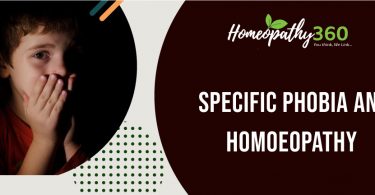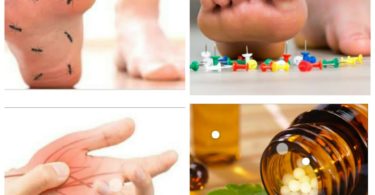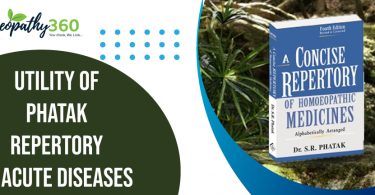Author: Dr.Febin George
PG Scholar, Department of Organon of Medicine
Father Muller Homoeopathic Medical College
Deralakatte, Mangaluru-575018.
ABSTRACT
Hordeolum or Stye is an inflammation of the eyelid associated with a small collection of pus. In most cases, the infection is caused by Staphylococcus bacteria. This article deals with an overview of hordeolum, its classification, causation, general and Homoeopathic management.
KEYWORDS – Hordeolum, Stye, Homoeopathy
INTRODUCTION
A hordeolum is a common disorder of the eyelid. It is an acute focal infection (usually staphylococcal) involving either the glands of Zeis (external hordeola) or, less frequently, the meibomian glands (internal hordeola).
CLASSIFICATION
There are two general categories of stye:
1) External Hordeolum
External styes emerge along the outer edge of the eyelid. They can become yellow, filled with pus, and painful when touched. They can be caused by an infection of the following:
• Eyelash follicle: The small holes in the skin from which eyelashes grow.
• Sebaceous (Zeis) gland: This gland is attached to the eyelash follicle and produces sebum. Sebum helps lubricate the eyelash and stop it from drying out.
• Apocrine (Moll) gland: This gland also helps prevent eyelashes from drying out. It is a sweat gland that empties into the eyelash follicle.
2) Internal Hordeolum
The swelling develops inside the eyelid. Generally, an internal hordeolum is more painful than an external one. They are also referred to as an internal stye and are most commonly due to an infection in the meibomian gland. These glands are responsible for producing a secretion which makes up part of the film that covers the eye.
AETIOLOGY
Styes can be caused by inflammation or infection of the eyelash follicle. There are small oil glands that sit around the eyelid and drain through ducts into the eyelashes. If something clogs the duct, the oil can’t drain and backs up into the glands. The gland becomes swollen and inflamed, causing the stye.
Risk Factors
Anyone can develop a stye in their eye, but there are certain factors that can increase the risk of developing them:
• Individuals who have had a stye or chalazion in the past are more likely to get another one in the future
• Skin conditions – like Rosacea or Dermatitis
• other medical issues – including diabetes, swelling of the eyelid, and high serum lipids
• using old makeup or not completely removing eye makeup on a regular basis.
CLINICAL FEATURES
Styes very rarely affect both eyes simultaneously. An individual will generally have one stye in one eye. However, it is possible to have more than one stye in the same eye or one in each eye.
Symptoms of a stye can include:
• a lump on the eyelid
• swelling of the eyelid
• pain
• redness
• crusting of the margins of the eyelids
• burning sensation
• droopiness of the eyelid
• itching of the eye
• blurry vision
• discharge of mucus from the eye
• light sensitivity
• discomfort when blinking
• the feeling that there is an object in the eye
COMPLICATIONS
Complications, although extremely rare, may sometimes occur. These can include:
Meibomian cyst: This is a cyst of the small glands located in the eyelid. The glands discharge a lubricant, called sebum in the edge of the eyelid. A persistent stye on the inside of the eyelid can eventually develop into a Meibomian cyst, or chalazion, especially if the gland is obstructed.
Pre-septal or periorbital cellulitis: This may develop if the infection spreads to the tissue around the eye. The layers of skin around the eye become inflamed and red, making the eyelids go red and swollen.
MANAGEMENT AND TREATMENT
General Management
• Wash hands regularly – this prevents particles being rubbed into the eye and clogging up the glands.
• Do not pop – squeezing and popping a stye can release pus and spread the infection. Allow it to drain naturally.
• Warm compress
• Teabag compress – similar to above, but replace the washcloth for a teabag that has been soaked in hot water. Green tea may be best as it has some antibacterial properties.
• Makeup habits – do not attempt to cover the stye with makeup, this can slow healing and irritate the stye. Old makeup should be discarded, and brushes should be regularly cleaned as they can be a breeding ground for bacteria. Wash makeup off daily.
• Contact lenses – individuals who use contact lenses should wash their hands when taking out, putting in, and caring for their lenses.
Homoeopathy in Hordeolum
1) Staphysagria: Indicated in recurrent styes. In this remedy. The stye does not break or suppurate- it remains as a hard nodule. Dry eyes with lachrymation. Margins of the lids itch. Nodes in the inner canthi and eyelids. Styes develop regularly. Better after rest at night and warm application. They are very sensitive and the least touch aggravates the pain.
2) Apis mellifica : Eyelids are red, swollen, puffy, like water bags. There is hot lachrymation and sudden, piercing pains. Pain around the orbits.
3) Graphites: It is for cystic tumours of the eyelids like styes. Eyelids feel heavy and fall; eyelids red and swollen. Dryness of the lids.
4) Pulsatilla Nigricans: Eyelids are inflamed and agglutinated. There is excessive lachrymation; weeping eyes. Thick, profuse, yellow, bland discharges with itching and burning in eyes. These styes are recurrent. Burning and itching in the eyes. Pulsatilla is the ideal remedy to treat the Styes of upper eyelid. This medicine can be considered in all those cases were eating of fatty food like butter, creams, pastries precede formation of the Stye.
5) Sepia officinalis: Especially if present with uterine complaints as concomitant. Ptosis. Epithelioma of the eyelids. Styes are generally seen on the upper eyelid. Eyelids are red and itchy.
6) Silicea: It is the best cure when complete pus has been formed in Stye that is usually in the last stage. Silicea helps in the pus getting absorbed or drained out, resulting in proper resolution of the Stye problem. Silicea is a natural medicine that also makes sure that no resultant nodule is left after the Stye is gone.
7) Conium: It is the best medicine for taking care of the hard nodes that remain after improper healing of Styes. These are referred to as Indurated Styes. Conium has the ability to soften such hard knots and make them disappear completely. In such cases, Conium is of great help in completely curing the Styes.
8) Euphrasia: Commonly known as Eye Bright. That’s no surprise as it has the remarkable ability to treat eye diseases. Euphrasia is best remedy when there is excessive watering with a burning sensation in eyes along with Styes. There is also marked redness and itching.
9) Ferrum Phos: It is the best remedy for the first stage of Stye. At this stage, redness, pain, tenderness and swelling are marked. This also stops the progression of the Stye to a stage of pus formation.
10) Some Remedies Based on Site and Sides:
Upper Lid: Alumin, Causticum, Ferrum, Mercurius, Phosphoric acid, Sulphur.
Lower Lid: Phosphorus, Rhus tox, Senega, Staphisagria.
Right side: Calc. carb, Cantharis, Natrum mur.
Left side: Colchicum, Lycopodium, Pulsatilla, Staphsagria.
For removing the disposition: Ammon carb, Calc. carb, Ferrum, Graphites, Sulphur, Thuja.
REFERENCES
(1) Sandhar Singh Harbakhash. Textbook of Opthalmology and Otology with Homeopathic Therapeutics, 1st edition, New Delhi, B.Jain Publishers, 2003.
(2) Chatterjee.B.M. Handbook of Opthalmology, 6th edition revised and enlarged, New Delhi, CBS Publishers & Distributers, 2002
(3) Boericke William : pocket manual of homoeopathic materia medica and repertory
(4) Clark J.H ;Dictionary of practical materia medica
(5) Norton A.B. Opthalmic Diseases and their Homeopathic Therapeutics, 3rd edition, New Delhi, B.Jain Publishers (P) Ltd., 2005





